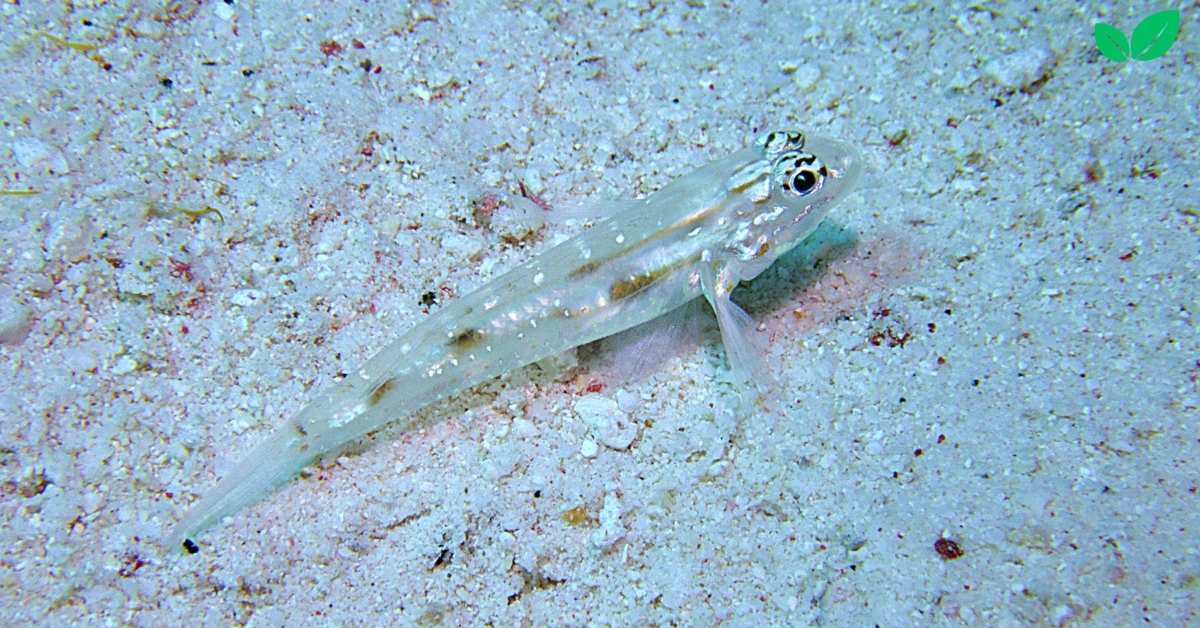The Sand Canyon Goby (Proterorhinus semipellucidus), a small and elusive fish, occupies a unique place in freshwater and brackish ecosystems. Native to the rivers, estuaries, and lagoons of the Eastern Mediterranean and parts of the Black and Caspian Seas, this goby has evolved a range of specialized adaptations that allow it to thrive in sandy substrates and turbid waters. As a benthic (bottom-dwelling) fish, the Sand Canyon Goby plays important roles in nutrient cycling, habitat structuring, and supporting food webs within its ecosystem.
In this article, we’ll examine the environmental niche of the Sand Canyon Goby, focusing on its habitat, adaptations, ecological roles, and interactions with other species. We’ll also explore the environmental challenges it faces, as well as conservation efforts aimed at protecting its habitats. By understanding the unique characteristics and contributions of the Sand Canyon Goby, we can appreciate its importance in maintaining the health and balance of freshwater and brackish ecosystems.
Overview of the Sand Canyon Goby: Characteristics and Habitat
The Sand Canyon Goby is a member of the Gobiidae family, a diverse group of fish known for their small size, adaptability, and specialized adaptations to life near or on the substrate. While it may not be as well-known as some other goby species, the Sand Canyon Goby is distinguished by its resilience and its ability to survive in habitats that present a range of physical and chemical challenges.
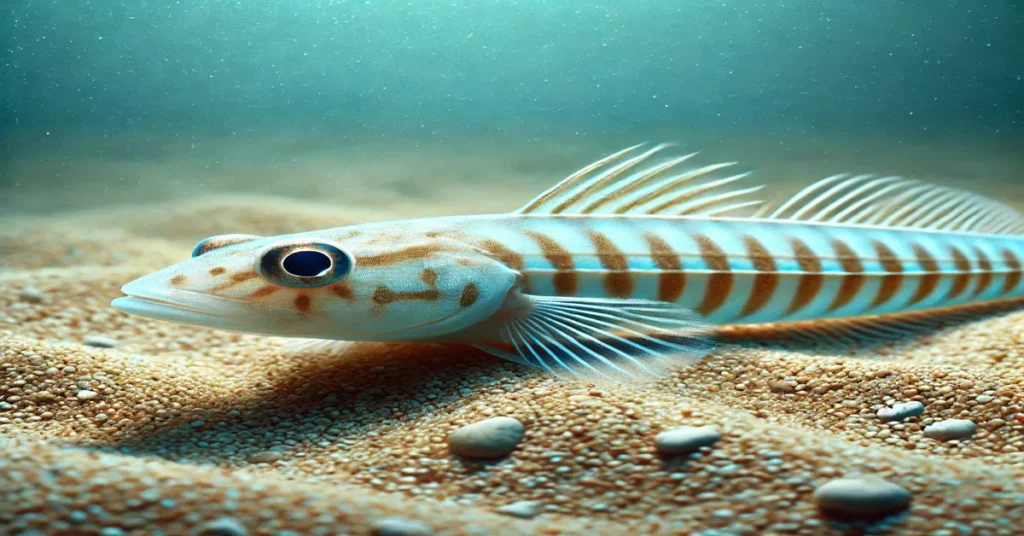
1. Physical Characteristics
The Sand Canyon Goby is a small fish, typically measuring between 2 and 5 inches in length. Its body is elongated and streamlined, allowing it to navigate easily through sandy or muddy substrates where it spends most of its time. The coloration of this goby is often a mottled blend of brown, gray, and sandy hues, which provides camouflage and protection from predators in the sediment-rich environments it inhabits.
One of the goby’s defining characteristics is its fused pelvic fins, which form a disc-like structure. This adaptation helps the fish anchor itself to the substrate in fast-moving or turbulent waters, allowing it to conserve energy and maintain its position on the riverbed or estuary floor. Its eyes are positioned on top of its head, providing an enhanced field of vision, which is beneficial for detecting predators and prey.
2. Habitat Preferences and Range
The Sand Canyon Goby is primarily found in freshwater rivers, brackish estuaries, and coastal lagoons in parts of Eastern Europe and the Eastern Mediterranean. Its natural range includes tributaries and water systems connected to the Black Sea, the Caspian Sea, and occasionally extends into freshwater and brackish bodies of water in the Middle East. It prefers shallow, sandy, or silty environments, where it can easily blend into its surroundings and find adequate shelter.
This goby thrives in areas with moderate to low water flow, though it can tolerate occasional fluctuations in salinity and turbidity, allowing it to survive in both freshwater and slightly brackish conditions. Its adaptability to various levels of salinity and water quality enables it to inhabit a wide range of microhabitats, contributing to its resilience and ecological versatility.
Adaptations of the Sand Canyon Goby to Its Environment
The Sand Canyon Goby has evolved several adaptations that enable it to survive in the often-turbulent and sediment-rich environments of rivers, estuaries, and coastal lagoons. These adaptations include camouflage, specialized fins for anchoring, and tolerance for variable salinity and oxygen levels.
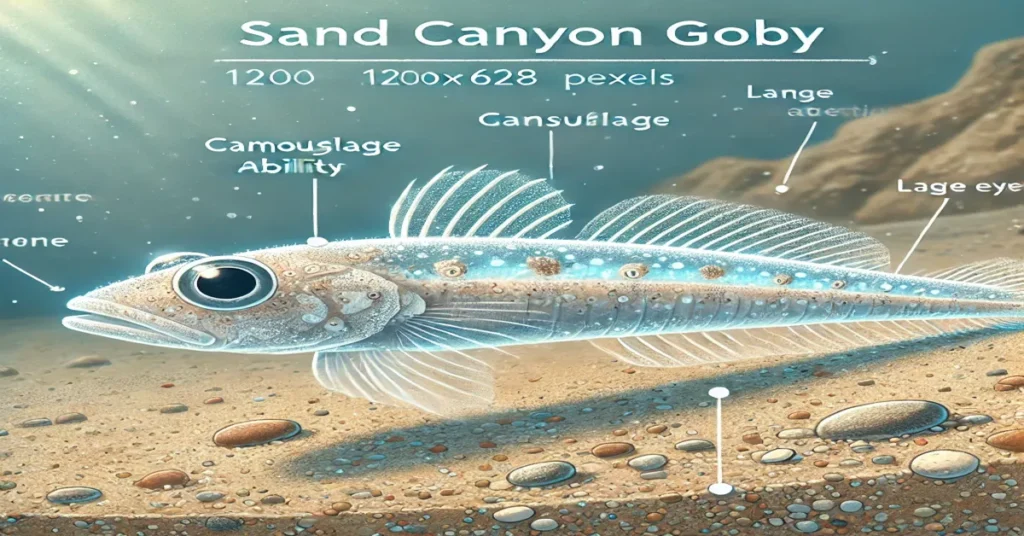
1. Camouflage and Coloration
One of the primary adaptations of the Sand Canyon Goby is its ability to blend into sandy or muddy substrates through its coloration and body shape. Its mottled brown and gray color patterns mimic the appearance of sand and silt, providing effective camouflage from predators such as larger fish and birds. This ability to blend into its environment is crucial for survival, as it reduces the risk of predation.
Camouflage also benefits the goby when it comes to ambushing prey. By blending into the substrate, the goby can remain hidden from small invertebrates and other organisms that make up its diet. This ambush strategy helps it conserve energy while hunting, allowing it to capture prey more efficiently.
2. Fused Pelvic Fins for Anchoring
The Sand Canyon Goby’s fused pelvic fins form a suction-like disc, which allows it to anchor itself to rocks, substrate, or other surfaces in fast-moving or turbulent water. This adaptation is especially useful in rivers and estuaries, where water currents can be strong and variable. By anchoring itself to the substrate, the goby can hold its position without expending energy, which is essential for its survival in energy-intensive habitats.
This disc-like structure also provides stability in sandy or silty environments, where loose substrates may otherwise make it difficult for fish to remain stationary. The goby’s ability to maintain its position on the substrate allows it to occupy areas that may be inaccessible to other fish, giving it a competitive advantage in these environments.
3. Salinity and Oxygen Tolerance
The Sand Canyon Goby’s range includes both freshwater and brackish environments, meaning it has adapted to tolerate variations in salinity and oxygen levels. Its ability to withstand these fluctuations allows it to inhabit estuaries and lagoons, where salinity levels can vary with the tides, as well as freshwater rivers and streams.
This tolerance to environmental variability makes the Sand Canyon Goby resilient in habitats with shifting conditions, which can be beneficial in regions impacted by seasonal changes, human activity, or natural events. The goby’s ability to survive in areas with low dissolved oxygen also enables it to inhabit more turbid, silt-heavy waters, which can be common in estuarine and riverine environments.
Ecological Roles and Benefits of the Sand Canyon Goby
The Sand Canyon Goby plays several important ecological roles, contributing to nutrient cycling, habitat structuring, and supporting biodiversity within its ecosystem. Its presence in rivers, estuaries, and coastal lagoons helps maintain the health and balance of these habitats.
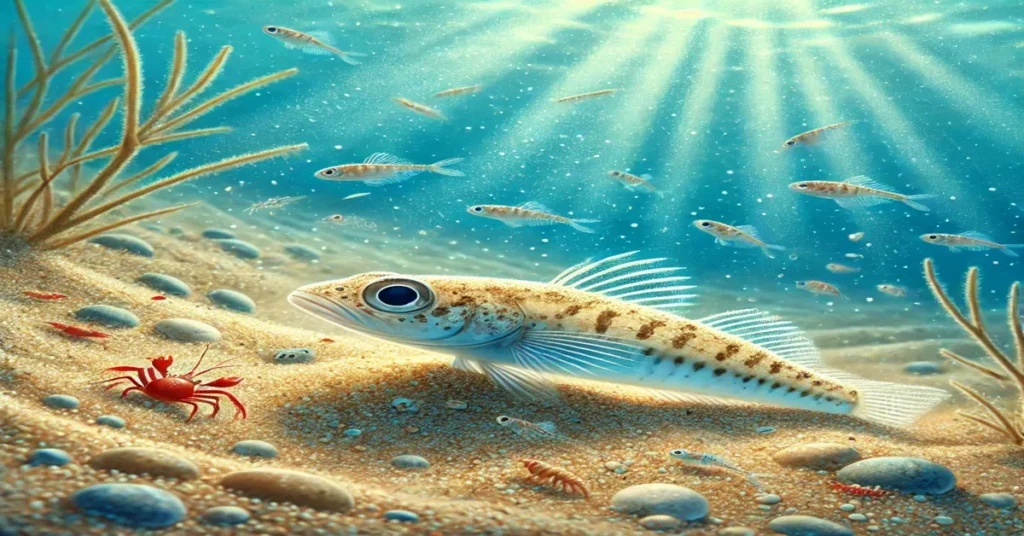
1. Role in Nutrient Cycling and Sediment Disturbance
As a benthic feeder, the Sand Canyon Goby contributes to nutrient cycling within its habitat. By consuming small invertebrates, detritus, and organic matter from the sediment, it helps break down organic materials, which releases nutrients back into the ecosystem. This nutrient cycling supports the productivity of aquatic ecosystems by making nutrients available to plants, algae, and other organisms in the food web.
The goby’s movements within the substrate also help aerate the sediment, facilitating the breakdown of organic matter and promoting oxygen exchange within the sediment. This aeration is particularly important in sandy and silty environments, where water flow may be limited, and can help prevent the buildup of harmful compounds within the sediment.
2. Prey Base for Larger Fish and Birds
The Sand Canyon Goby serves as an essential food source for a variety of larger fish, birds, and other predators within its ecosystem. Its role as prey supports local food webs, providing energy and sustenance for species higher up the trophic chain. By contributing to these food webs, the goby indirectly supports biodiversity and helps maintain the ecological balance of its habitat.
The presence of the Sand Canyon Goby as a prey species also highlights its importance within migratory bird flyways, where bird species that depend on coastal habitats stop to feed. By serving as a food source, the goby plays a small but significant role in supporting migratory bird populations that rely on these habitats for survival.
3. Contribution to Habitat Structure and Stability
Through its foraging and burrowing activities, the Sand Canyon Goby contributes to the structure and stability of its habitat. By disturbing the sediment, the goby creates small burrows and depressions that provide shelter and microhabitats for other organisms, such as small invertebrates and juvenile fish. These microhabitats enhance biodiversity by creating additional niches within the environment.
The goby’s influence on habitat structure can also help stabilize sandy and silty substrates, reducing the risk of erosion in certain areas. In this way, the Sand Canyon Goby contributes to the overall resilience of its ecosystem, supporting a stable and diverse aquatic habitat.
Interactions of the Sand Canyon Goby with Other Species
The Sand Canyon Goby interacts with various species within its ecosystem, forming predator-prey relationships, competitive interactions, and mutualistic relationships with other organisms. These interactions demonstrate the interconnectedness of the goby with other members of its ecosystem.
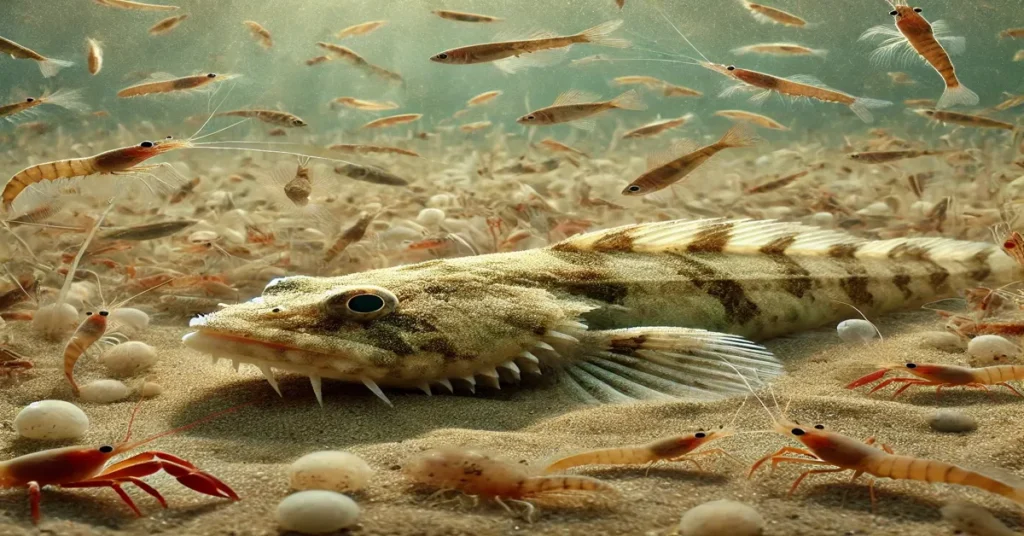
1. Predator-Prey Relationships with Larger Fish and Birds
As a small fish, the Sand Canyon Goby is a common prey item for larger fish species and aquatic birds. This predator-prey relationship plays a significant role in controlling goby populations and maintaining the balance of the ecosystem. The goby’s abundance in certain habitats helps sustain populations of larger fish and bird species, which rely on a steady food supply to thrive.
Predators such as herons, egrets, and certain larger fish depend on the presence of gobies and other small fish as a food source. The goby’s role in the food web thus contributes to the health and stability of predator populations within its ecosystem.
2. Competition with Other Benthic Fish
The Sand Canyon Goby shares its habitat with other benthic fish species, including different gobies and small bottom-dwelling fish that compete for resources like food and shelter. While its specialized adaptations give it an advantage in sandy or silty environments, the goby must still compete with other species for limited resources, particularly in habitats with high population densities.
This competitive interaction helps regulate the populations of benthic fish within these habitats, preventing any one species from becoming dominant. By competing with other fish, the goby contributes to a balanced and diverse community within its ecosystem, supporting overall biodiversity.
3. Mutualistic Relationships with Sediment-Dwelling Organisms
The Sand Canyon Goby’s foraging and burrowing behavior provides benefits to other sediment-dwelling organisms, such as worms, crustaceans, and small invertebrates. By disturbing the sediment, the goby exposes organic matter and nutrients that these organisms can use for food. In turn, the presence of sediment-dwelling organisms benefits the goby by maintaining a diverse and abundant prey base.
This mutualistic relationship contributes to a stable and productive sediment ecosystem, where different species support each other’s survival and growth. The goby’s role in this relationship highlights its importance as a key species in maintaining the health of sediment-rich habitats.
Conservation Challenges Facing the Sand Canyon Goby
Despite its adaptability, the Sand Canyon Goby faces several conservation challenges, including habitat loss, pollution, climate change, and invasive species. These threats can impact its populations and the health of the ecosystems it supports.
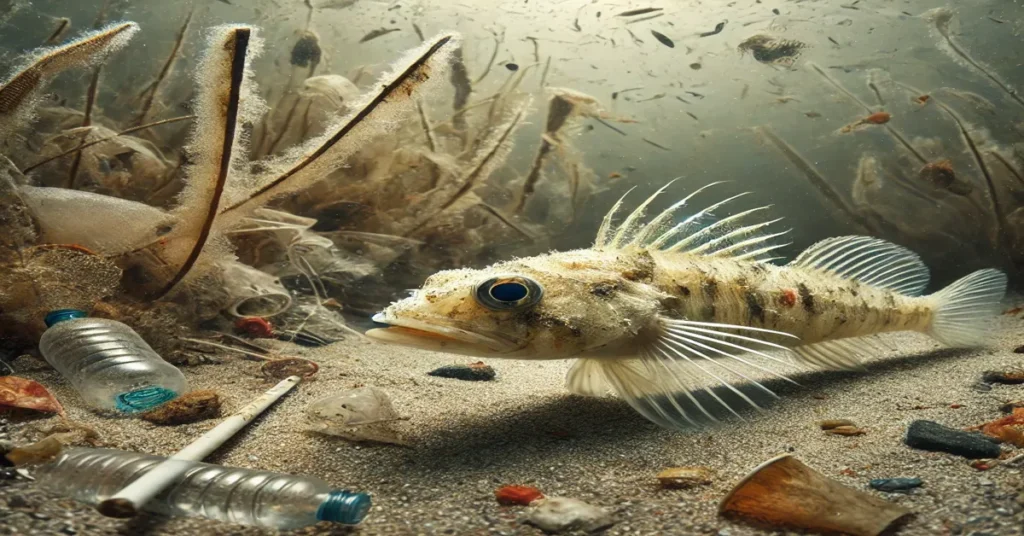
1. Habitat Loss Due to Coastal Development
Coastal development, including urbanization, agriculture, and industrial activities, poses a significant threat to the habitats of the Sand Canyon Goby. As wetlands, estuaries, and river systems are altered or destroyed, the goby loses critical habitat and access to essential resources. Habitat loss can reduce goby populations and disrupt the ecological roles it plays within its environment.
Efforts to protect and restore coastal habitats, particularly in estuaries and river systems, are essential for conserving Sand Canyon Goby populations. By preserving its natural habitats, we can support the health and resilience of these ecosystems, benefiting not only the goby but also other species that rely on these habitats.
2. Pollution and Water Quality Degradation
Pollution from agricultural runoff, industrial waste, and untreated sewage can degrade water quality and harm Sand Canyon Goby populations. Chemicals and pollutants in the water can disrupt the goby’s reproductive and respiratory systems, reducing its ability to survive and reproduce. Additionally, pollution can lead to the buildup of harmful compounds within sediments, further impacting the goby and other sediment-dwelling organisms.
Improving water quality through pollution control measures and environmental regulations is essential for protecting the goby’s habitat and ensuring its survival. Conservation efforts that focus on reducing pollution and monitoring water quality can help maintain healthy populations of the Sand Canyon Goby and other aquatic species.
3. Impact of Climate Change
Climate change presents a long-term threat to the Sand Canyon Goby and its habitat. Rising temperatures and changing precipitation patterns can alter water levels, salinity, and the availability of suitable habitats for the goby. In addition, increased storm intensity and coastal erosion can disrupt estuarine and riverine environments, making it more challenging for the goby to thrive.
Conservation strategies that focus on habitat resilience and climate adaptation are essential for supporting the Sand Canyon Goby in the face of climate change. Protecting and restoring natural habitats can help mitigate the impacts of climate change and provide the goby with suitable environments in the future.
Conclusion
The Sand Canyon Goby is a resilient and ecologically valuable fish that plays a significant role in freshwater and brackish ecosystems. With its specialized adaptations for camouflage, salinity tolerance, and substrate anchoring, this small fish is well-suited to its habitat in rivers, estuaries, and coastal lagoons. The goby contributes to nutrient cycling, habitat structuring, and biodiversity, supporting the health and balance of the ecosystems it inhabits.
However, the Sand Canyon Goby faces conservation challenges, including habitat loss, pollution, and climate change. Protecting its natural habitats, improving water quality, and implementing conservation measures are essential for ensuring the survival of this unique fish. By understanding and preserving the Sand Canyon Goby, we contribute to the resilience and sustainability of the ecosystems that depend on this remarkable species.
FAQs
1. What makes the Sand Canyon Goby unique among fish?
The Sand Canyon Goby has adaptations like camouflage, fused pelvic fins for anchoring, and tolerance for variable salinity, which help it thrive in sediment-rich habitats.
2. Where is the Sand Canyon Goby naturally found?
This goby is found in freshwater and brackish environments in Eastern Europe, the Eastern Mediterranean, and areas connected to the Black and Caspian Seas.
3. How does the Sand Canyon Goby support its ecosystem?
It contributes to nutrient cycling, provides prey for larger species, and helps structure sediment habitats, promoting biodiversity and ecosystem health.
4. What are the main threats to Sand Canyon Goby populations?
Habitat loss, pollution, and climate change pose significant threats to the Sand Canyon Goby and the stability of its habitats.
5. How does the Sand Canyon Goby interact with other species?
The goby interacts as prey for larger fish and birds, competes with other benthic fish, and supports sediment-dwelling organisms through its foraging activities.
6. What conservation efforts are essential for the Sand Canyon Goby?
Protecting coastal habitats, reducing pollution, and promoting climate resilience are crucial to conserve the Sand Canyon Goby and maintain healthy ecosystems.
Read More: Flounder Fish: Exploring Its Environmental Niche and Ecological Importance

